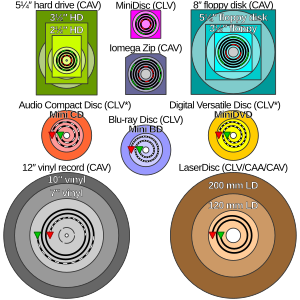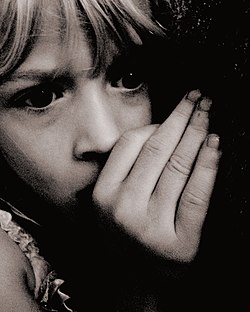Senlin sits before us, and we see him.
He smokes his pipe before us, and we hear him.
Is he small, with reddish hair,
Does he light his pipe with meditative stare,
And a pointed flame reflected in both eyes?
Is he sad and happy and foolish and wise?
Did no one see him enter the doors of the city,
Looking above him at the roofs and trees and skies?
'I stepped from a cloud', he says, 'as evening fell;
I walked on the sound of a bell;
I ran with winged heels along a gust;
Or is it true that I laughed and sprang from dust? . . .
Has no one, in a great autumnal forest,
When the wind bares the trees,
Heard the sad horn of Senlin slowly blown?
Has no one, on a mountain in the spring,
Heard Senlin sing?
Perhaps I came alone on a snow-white horse,—
Riding alone from the deep-starred night.
Perhaps I came on a ship whose sails were music,—
Sailing from moon or sun on a river of light.'
He lights his pipe with a pointed flame.
'Yet, there were many autumns before I came,
And many springs. And more will come, long after
There is no horn for me, or song, or laughter.
The city dissolves about us, and its walls
Become an ancient forest. There is no sound
Except where an old twig tires and falls;
Or a lizard among the dead leaves crawls;
Or a flutter is heard in darkness along the ground.
Has Senlin become a forest? Do we walk in Senlin?
Is Senlin the wood we walk in, —ourselves,—the world?
Senlin! we cry . . . Senlin! again . . . No answer,
Only soft broken echoes backward whirled . . .
Yet we would say: this is no wood at all,
But a small white room with a lamp upon the wall;
And Senlin, before us, pale, with reddish hair,
Lights his pipe with a meditative stare.
2
Senlin, walking beside us, swings his arms
And turns his head to look at walls and trees.
The wind comes whistling from shrill stars of winter,
The lights are jewels, black roots freeze.
'Did I, then, stretch from the bitter earth like these,
Reaching upward with slow and rigid pain
To seek, in another air, myself again?'
(Immense and solitary in a desert of rocks
Behold a bewildered oak
With white clouds screaming through its leafy brain.)
'Or was I the single ant, or tinier thing,
That crept from the rocks of buried time
And dedicated its holy life to climb
From atom to beetling atom, jagged grain to grain,
Patiently out of the darkness we call sleep
Into a hollow gigantic world of light
Thinking the sky to be its destined shell,
Hoping to fit it well!—'
The city dissolves about us, and its walls
Are mountains of rock cruelly carved by wind.
Sand streams down their wasting sides, sand
Mounts upward slowly about them: foot and hand
We crawl and bleed among them! Is this Senlin?
In the desert of Senlin must we live and die?
We hear the decay of rocks, the crash of boulders,
Snarling of sand on sand. 'Senlin!' we cry.
'Senlin!' again . . . Our shadows revolve in silence
Under the soulless brilliance of blue sky.
Yet we would say: there are no rocks at all,
Nor desert of sand . . . here by a city wall
White lights jewell the evening, black roots freeze,
And Senlin turns his head to look at trees.
3
It is evening, Senlin says, and in the evening,
By a silent shore, by a far distant sea,
White unicorns come gravely down to the water.
In the lilac dusk they come, they are white and stately,
Stars hang over the purple waveless sea;
A sea on which no sail was ever lifted,
Where a human voice was never heard.
The shadows of vague hills are dark on the water,
The silent stars seem silently to sing.
And gravely come white unicorns down to the water,
One by one they come and drink their fill;
And daisies burn like stars on the darkened hill.
It is evening Senlin says, and in the evening
The leaves on the trees, abandoned by the light,
Look to the earth, and whisper, and are still.
The bat with horned wings, tumbling through the darkness,
Breaks the web, and the spider falls to the ground.
The starry dewdrop gathers upon the oakleaf,
Clings to the edge, and falls without a sound.
Do maidens spread their white palms to the starlight
And walk three steps to the east and clearly sing?
Do dewdrops fall like a shower of stars from willows?
Has the small moon a ghostly ring? . . .
White skeletons dance on the moonlit grass,
Singing maidens are buried in deep graves,
The stars hang over a sea like polished glass . . .
And solemnly one by one in the darkness there
Neighing far off on the haunted air
White unicorns come gravely down to the water.
No silver bells are heard. The westering moon
Lights the pale floors of caverns by the sea.
Wet weed hangs on the rock. In shimmering pools
Left on the rocks by the receding sea
Starfish slowly turn their white and brown
Or writhe on the naked rocks and drown.
Do sea-girls haunt these caves—do we hear faint singing?
Do we hear from under the sea a faint bell ringing?
Was that a white hand lifted among the bubbles
And fallen softly back?
No, these shores and caverns are all silent,
Dead in the moonlight; only, far above,
On the smooth contours of these headlands,
White amid the eternal black,
One by one in the moonlight there
Neighing far off on the haunted air
The unicorns come down to the sea.
4
Senlin, walking before us in the sunlight,
Bending his small legs in a peculiar way,
Goes to his work with thoughts of the universe.
His hands are in his pockets, he smokes his pipe,
He is happily conscious of roofs and skies;
And, without turning his head, he turns his eyes
To regard white horses drawing a small white hearse.
The sky is brilliant between the roofs,
The windows flash in the yellow sun,
On the hard pavement ring the hoofs,
The light wheels softly run.
Bright particles of sunlight fall,
Quiver and flash, gyrate and burn,
Honey-like heat flows down the wall,
The white spokes dazzle and turn.
Senlin, walking before us in the sunlight,
Regards the hearse with an introspective eye.
'Is it my childhood there,' he asks,
'Sealed in a hearse and hurrying by?'
He taps his trowel against a stone;
The trowel sings with a silver tone.
'Nevertheless I know this well.
Bury it deep and toll a bell,
Bury it under land or sea,
You cannot bury it save in me.'
It is as if his soul had become a city,
With noisily peopled streets, and through these streets
Senlin himself comes driving a small white hearse . . .
'Senlin!' we cry. He does not turn his head.
But is that Senlin?—Or is this city Senlin,—
Quietly watching the burial of the dead?
Dumbly observing the cortège of its dead?
Yet we would say that all this is but madness:
Around a distant corner trots the hearse.
And Senlin walks before us in the sunlight
Happily conscious of his universe.
5
In the hot noon, in an old and savage garden,
The peach-tree grows. Its cruel and ugly roots
Rend and rifle the silent earth for moisture.
Above, in the blue, hang warm and golden fruits.
Look, how the cancerous roots crack mould and stone!
Earth, if she had a voice, would wail her pain.
Is she the victim, or is the tree the victim?
Delicate blossoms opened in the rain,
Black bees flew among them in the sunlight,
And sacked them ruthlessly; and no a bird
Hangs, sharp-eyed, in the leaves, and pecks the fruit;
And the peach-tree dreams, and does not say a word.
. . . Senlin, tapping his trowel against a stone,
Observes this tree he planted: it is his own.
'You will think it strange,' says Senlin, 'but this tree
Utters profound things in this garden;
And in its silence speaks to me.
I have sensations, when I stand beneath it,
As if its leaves looked at me, and could see;
And those thin leaves, even in windless air,
Seem to be whispering me a choral music,
Insubstantial but debonair.
"Regard," they seem to say,
"Our idiot root, which going its brutal way
Has cracked your garden wall!
Ugly, is it not?
A desecration of this place . . .
And yet, without it, could we exist at all?"
Thus, rustling with importance, they seem to me
To make their apology;
Yet, while they apologize,
Ask me a wary question with their eyes.
Yes, it is true their origin is low—
Brutish and dull and cruel . . . and it is true
Their roots have cracked the wall. But do we know
The leaves less cruel—the root less beautiful?
Sometimes it seems as if there grew
In the dull garden of my mind
A tree like this, which, singing with delicate leaves,
Yet cracks the wall with cruel roots and blind.
Sometimes, indeed, it appears to me
That I myself am such a tree . . .'
. . . And as we hear from Senlin these strange words
So, slowly, in the sunlight, he becomes this tree:
And among the pleasant leaves hang sharp-eyed birds
While cruel roots dig downward secretly.
6
Rustling among his odds and ends of knowledge
Suddenly, to his wonder, Senlin finds
How Cleopatra and Senebtisi
Were dug by many hands from ancient tombs.
Cloth after scented cloth the sage unwinds:
Delicious to see our futile modern sunlight
Dance like a harlot among these Dogs and Dooms!
First, the huge pyramid, with rock on rock
Bloodily piled to heaven; and under this
A gilded cavern, bat festooned;
And here in rows on rows, with gods about them,
Cloudily lustrous, dim, the sacred coffins,
Silver starred and crimson mooned.
What holy secret shall we now uncover?
Inside the outer coffin is a second;
Inside the second, smaller, lies a third.
This one is carved, and like a human body;
And painted over with fish and bull and bird.
Here are men walking stiffly in procession,
Blowing horns or lifting spears.
Where do they march to? Where do they come from?
Soft whine of horns is in our ears.
Inside, the third, a fourth . . . and this the artist,—
A priest, perhaps—did most to make resemble
The flesh of her who lies within.
The brown eyes widely stare at the bat-hung ceiling.
The hair is black, The mouth is thin.
Princess! Secret of life! We come to praise you!
The torch is lowered, this coffin too we open,
And the dark air is drunk with musk and myrrh.
Here are the thousand white and scented wrappings,
The gilded mask, and jeweled eyes, of her.
And now the body itself, brown, gaunt, and ugly,
And the hollow scull, in which the brains are withered,
Lie bare before us. Princess, is this all?
Something there was we asked that is not answered.
Soft bats, in rows, hang on the lustered wall.
And all we hear is a whisper sound of music,
Of brass horns dustily raised and briefly blown,
And a cry of grief; and men in a stiff procession
Marching away and softly gone.
7
'And am I then a pyramid?' says Senlin,
'In which are caves and coffins, where lies hidden
Some old and mocking hieroglyph of flesh?
Or am I rather the moonlight, spreading subtly
Above those stones and times?
Or the green blade of grass that bravely grows
Between to massive boulders of black basalt
Year after year, and fades and blows?
Senlin, sitting before us in the lamplight,
Laughs, and lights his pipe. The yellow flame
Minutely flares in his eyes, minutely dwindles.
Does a blade of grass have Senlin for a name?
Yet we would say that we have seen him somewhere,
A tiny spear of green beneath the blue,
Playing his destiny in a sun-warmed crevice
With the gigantic fates of frost and dew.
Does a spider come and spin his gossamer ladder
Rung by silver rung,
Chaining it fast to Senlin? Its faint shadow
Flung, waveringly, where his is flung?
Does a raindrop dazzle starlike down his length
Trying his futile strength?
A snowflake startle him? The stars defeat him?
Through aeons of dusk have birds above him sung?
Time is a wind, says Senlin; time, like music,
Blows over us its mournful beauty, passes,
And leaves behind a shadowy reflection,—
A helpless gesture of mist above the grasses.
8
In cold blue lucid dusk before the sunrise,
One yellow star sings over a peak of snow,
And melts and vanishes in a light like roses.
Through slanting mist, black rocks appear and glow.
The clouds flow downward, slowly as grey glaciers,
Or up to a pale rose-azure pass.
Blue streams tinkle down from snow to boulders,
From boulders to white grass.
Icicles on the pine tree melt
And softly flash in the sun:
In long straight lines the star-drops fall
One by one.
Is a voice heard while the shadows still are long,
Borne slowly down on the sparkling air?
Is a thin bell heard from the peak of silence?
Is someone among the high snows there?
Where the blue stream flows coldly among the meadows
And mist still clings to rock and tree
Senlin walks alone; and from that twilight
Looks darkly up, to see
The calm unmoving peak of snow-white silence,
The rocks aflame with ice, the rose-blue sky . . .
Ghost-like, a cloud descends from twinkling ledges,
To nod before the dwindling sun and die.
'Something there is,' says Senlin, 'in that mountain,
Something forgotten now, that once I knew . . .'
We walk before a sun-tipped peak in silence,
Our shadows descend before us, long and blue.







































































